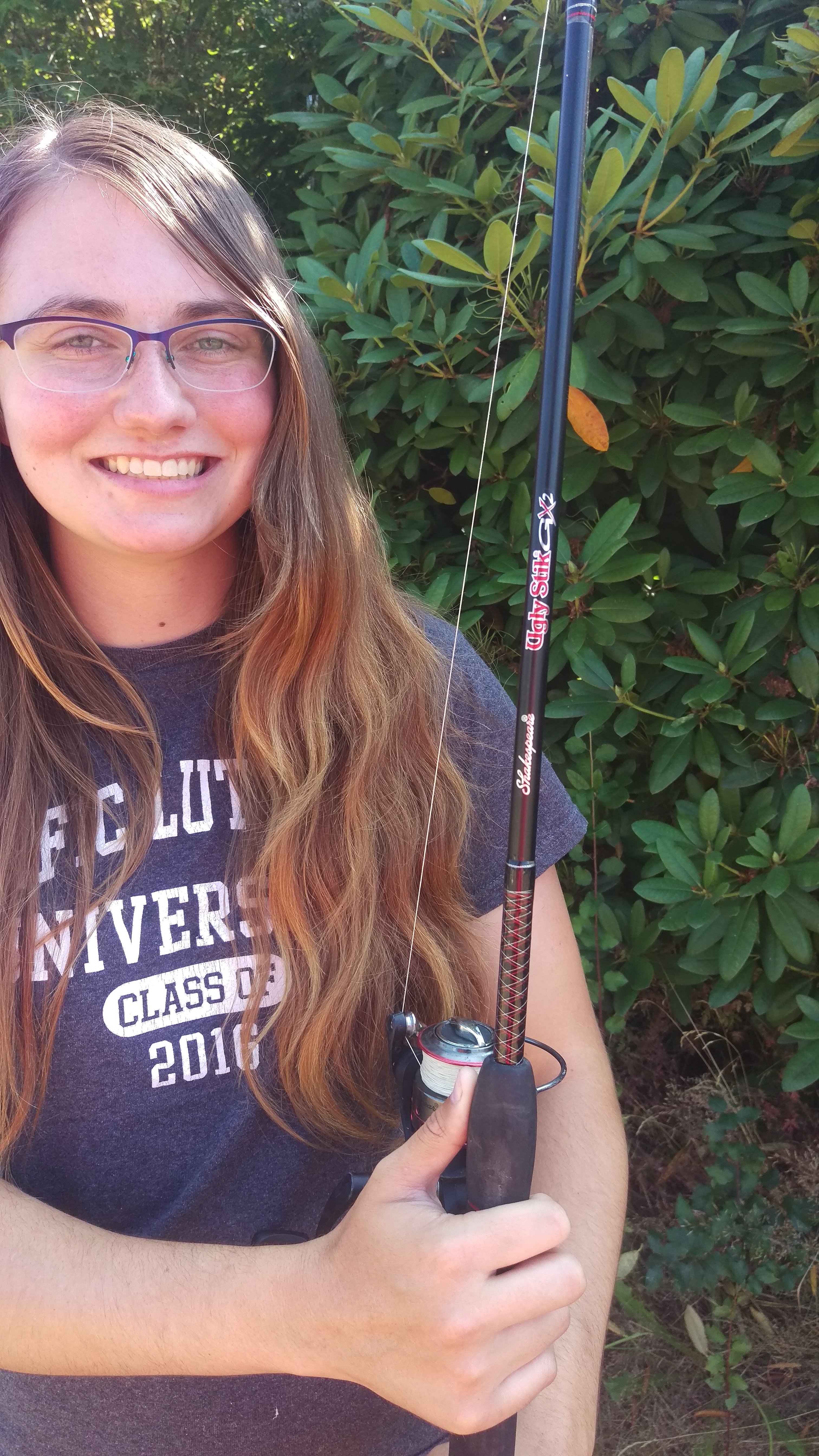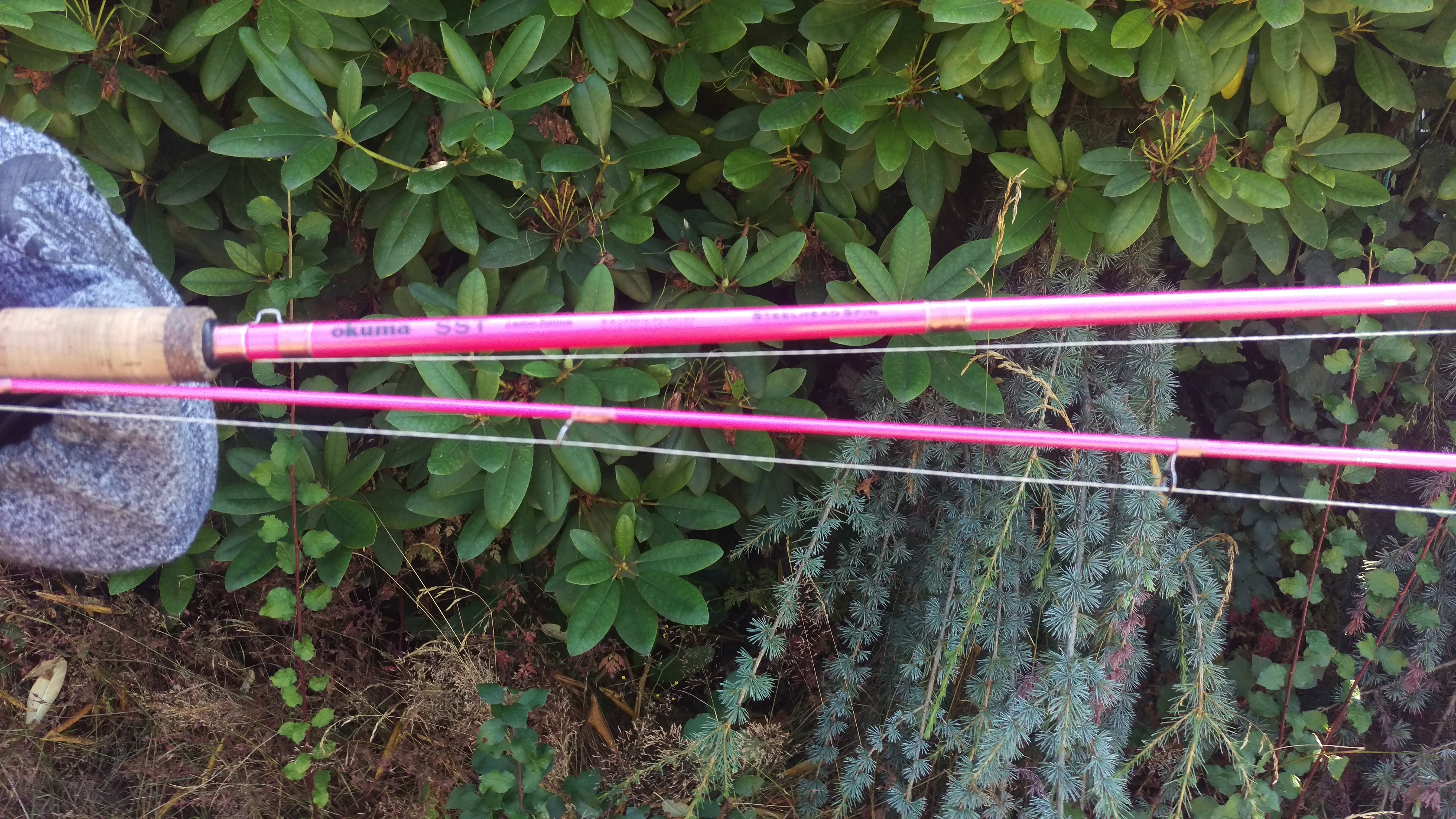Search
Latest Articles
Tackle Tips for Summer Trips: Part II
by Hannah Pennebaker , August 05, 2019
Decoding Rod Ratings
Most rods are stamped with its length and power rating. Generally, longer rods are more sensitive and cast further, but run the risk of getting snagged on tree branches and brush either while casting or fighting a fish. Boat anglers often want a short rod for easier handling. As for power, this rating ranges from ultra light to extra heavy. Generally, the lighter the rod the more sensitive it is to a fish's light bites. The heavier the action, the more power it will load up and hold in a fight and the less it will bend. This also correlates to weight capacity. Ultralight rods are often rated for as little as 1/32 ounces, while heavy action rods can be rated up to 6 ounces. This is something to consider when choosing the right rod for the job.
Sometimes rods are rated fast, medium, or slow action. This refers to how much the rod bends. A fast action rod will only bend at the top third of the pole, while a slow action rod will bend in the lower third of the rod. Fast action rods offer a stronger hookset because you don't have to pull as much to get to the stiffer part of the rod. However, moderate to slow action rods often help you cast farther because they load up your weight easier. For most saltwater applications I recommend moderate to fast action for a good balance between sensitivity and solid hooksets.
Another aspect to consider when choosing a rod is whether it's made of fiberglass, graphite, or composite. Fiberglass is usually the cheapest material, and also the least sensitive. It flexes throughout the length of the rod, but it is still plenty strong to handle big fish. Graphite is the most expensive choice; it is incredibly sensitive but not as strong as fiberglass. Usually these rods are fast action. Composite rods are a nice balance between durability and sensitivity. It's also a good idea to look at the rod's guides and what material they are constructed from. Silicone carbide, aluminum oxide, titanium, and ceramic are popular options and will serve you well. If you run braided line, pay particular attention to your guides, as braid has a tendency to wear through them over time. Double footed guides will offer more strength and durability than single footed ones. Generally, there should be one guide for every foot of rod. An 8 foot rod should have 8 guides, for instance. More guides means smoother casting!
Surf Fishing
As discussed in my previous article, there are two methods of surf fishing today. The first method involves using a 12-15 foot rod and a heavy reel to cast out as far as you can. The rod is then held or placed in a sand spike to wait for a bite. Using this method, I often find that my arms tire after a long day of casting such a heavy setup, and usually the surf perch are closer to shore than you might think. Sometimes I'm surprised they don't manage to beach themselves! But if you'd like to try this, you have a few options for rod choices. The Okuma Tundra is a great deal for a 15 foot rod. You can find it at most tackle shops for around $30. It is heavy and thick, but strong. Bass Pro's Offshore Angler Breakwater is another great option; this pole is much lighter and snappier and comes in a variety of lengths. The Fiblink Moonsniper is similar to the Breakwater, as has nice features such as a carbon fiber handle and ceramic rod guides. If you want to stick with Penn, a very reputable saltwater brand, you can't go wrong with the Prevail, although some say it is heavy for its size. The Okuma Rockway is a favorite of many anglers. It has an long handle for extra leverage when casting far out into the surf.
The other school of thought involves the use of a salmon-steelhead rod and a 3000-4000 size reel. I prefer this method because I can cast and move all day, and surf perch are a blast on lighter tackle. Give it a chance and you'll be surprised at what scrappy fighters they are. For this setup you have many options. I like to go long and light. 8'6 to 11 foot, medium light to medium action rods provide the best balance between weight and castability. My 10'6 medium light Okuma SST has reeled in many a surf perch. SST's are many a Northwesterner's favorite rod. I've also had success with the Okuma Celilo, which is a fantastic bargain rod. The Lamiglas Redline is another reliable and strong rod. Any long and light salmon-steelhead rod will be more than enough for surf perch.
Pier Fishing
On those hot summer days, there is nothing better than cracking open a cold drink and fishing off one of the many saltwater piers in Western Washington. You'll want something with some backbone, particularly for this time of year when dogfish sharks are prevalent. Length of rod does not particularly matter; the fish are often surprisingly close to the pier. An Uglystik GX2 is my go-to because it is both strong and reliable. There are videos online of people reeling in chainsaws with this rod! It won't break the bank either, with most combos running around $50. Dock Demons are another popular, inexpensive option. Penn offers a combo with their Penn Pursuit that is quite reliable. Keep an eye out for composite or fiberglass to get a strong pole that will last you years to come.
Jetty Fishing
For jetty fishing, the angler needs a rod that can stand up to being dropped on the rocks while still fighting 20 pound lingcod. I would suggest an 8'6 to 10' rod, medium to heavy action. The Penn Battle II combo is a great value for this application. It is both strong and durable enough to withstand saltwater splashes and tumbles on the rocks. The Shimano Scimitar is tough and offers good casting distance. I'd recommend composite or fiberglass material to withstand a beating.
Boat Fishing
When fishing for big, toothy bottom critters such as lingcod, rockfish, and cabezon, you'll want something with durability, strength, and power. Look for a short, 6-8 foot rod, medium heavy to heavy action. A great starter would be the Penn Mariner. If you're looking for something with rollers, the Penn Rampage is a great choice because it is still sensitive enough to detect the lightest bite. I've also used the Daiwa Beefstik with great success. Look for composite rods for a balance of strength and good hook setting ability.
Overall, no matter what you choose, it all comes down to personal preference. Technology is always evolving and choices only continue to expand. If it catches you plenty of fish, it works!
Hannah Pennebaker graduated from Pacific Lutheran University with a degree in Environmental Studies. She enjoys both freshwater and saltwater fishing adventures in the Puget Sound area with her fishing group, the Straw Hat Fishermen.


